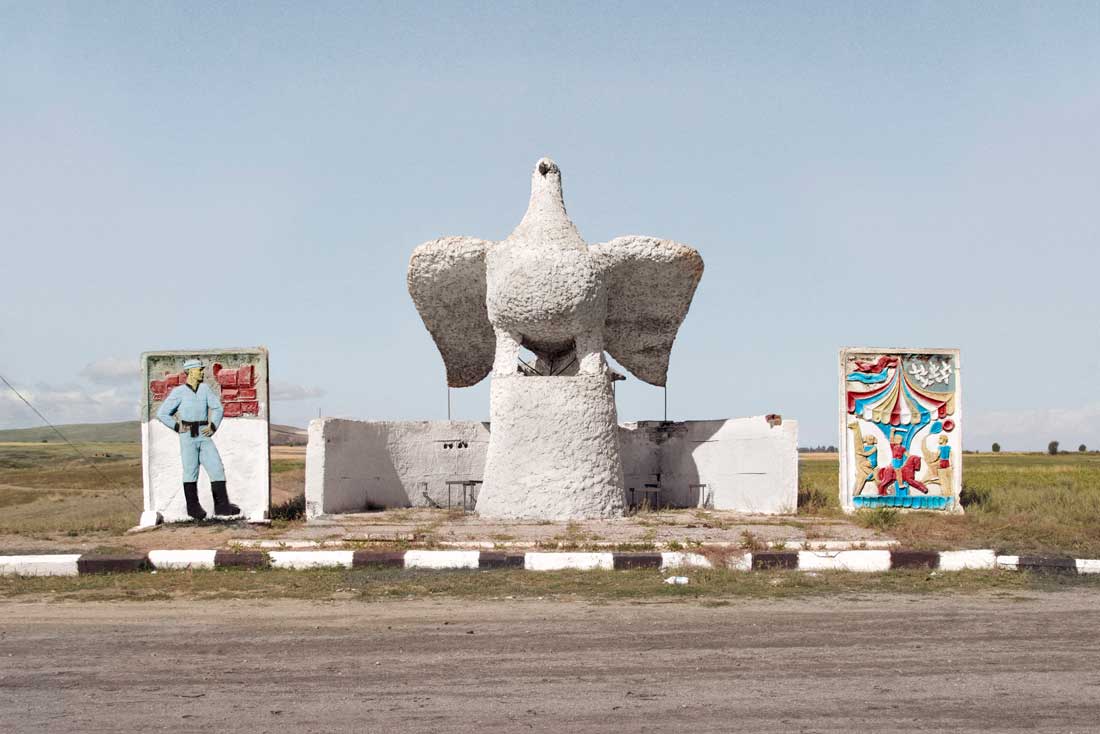
The Glitz and Poverty of Soviet Bus Stops
The second album of Herwig’s travel photos will be released this month. Bird in Flight talked with the photographer about how bus stops have consumed his life, on why it’s easier to track down interesting structures in the Baltics than in other former USSR countries, and on why there were no photos taken in Russia in his first book.

Age 40
In 2002, I rode a bicycle from London to St. Petersburg. When I crossed the border into Lithuania, I began noticing these unusual bus stops. They became the main object of my photography on the road through the Baltics. I didn’t plan on continuing this venture, but my wife and I were required to move to Kazakhstan for three years according to our UN mission just after my bike trip had ended. I traveled more than 30,000 kilometers across Central Asia and the Caucasus. I found more and more bus stops during my travels, all of them seemingly stuck in a Soviet time capsule. In this way, my hobby turned into a photo project.
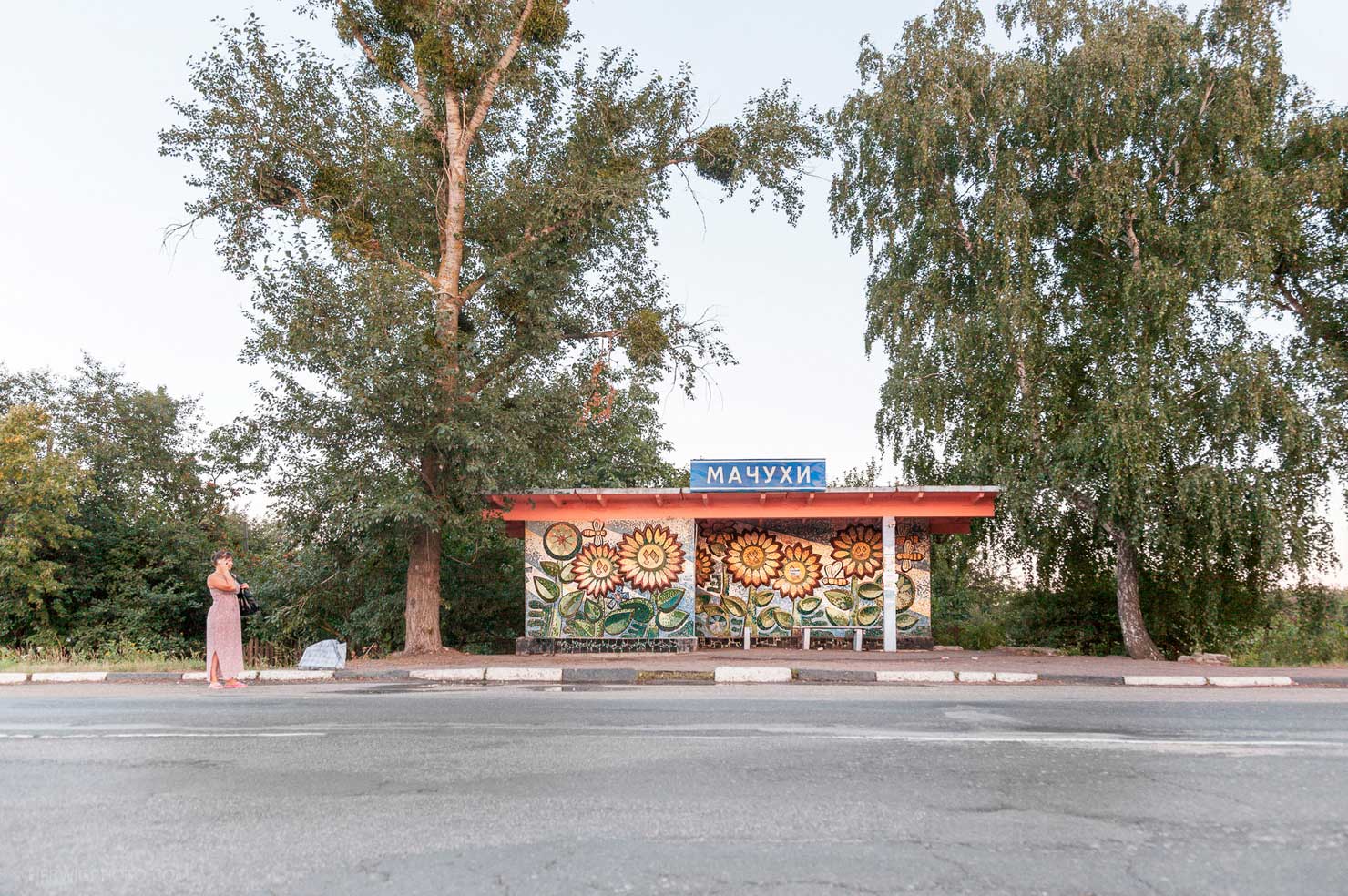
Machukhi, Ukraine.
{“img”:”/wp-content/uploads/2015/09/stop_02.jpg”, “text”: “Faleshty, Moldova.”}
{“img”:”/wp-content/uploads/2015/09/stop_03.jpg”, “text”: “Rokishkis, Lithuania.”}
I was studying travelers’ blogs and hanging around forums trying to find out any information in any language. I got to know a writer-traveler from Germany during my search, who had a collection of photos of Ukrainian and Russian bus stops. However, he refused to give me any info on where his pictures were taken. This added a layer of competition to the whole thing.
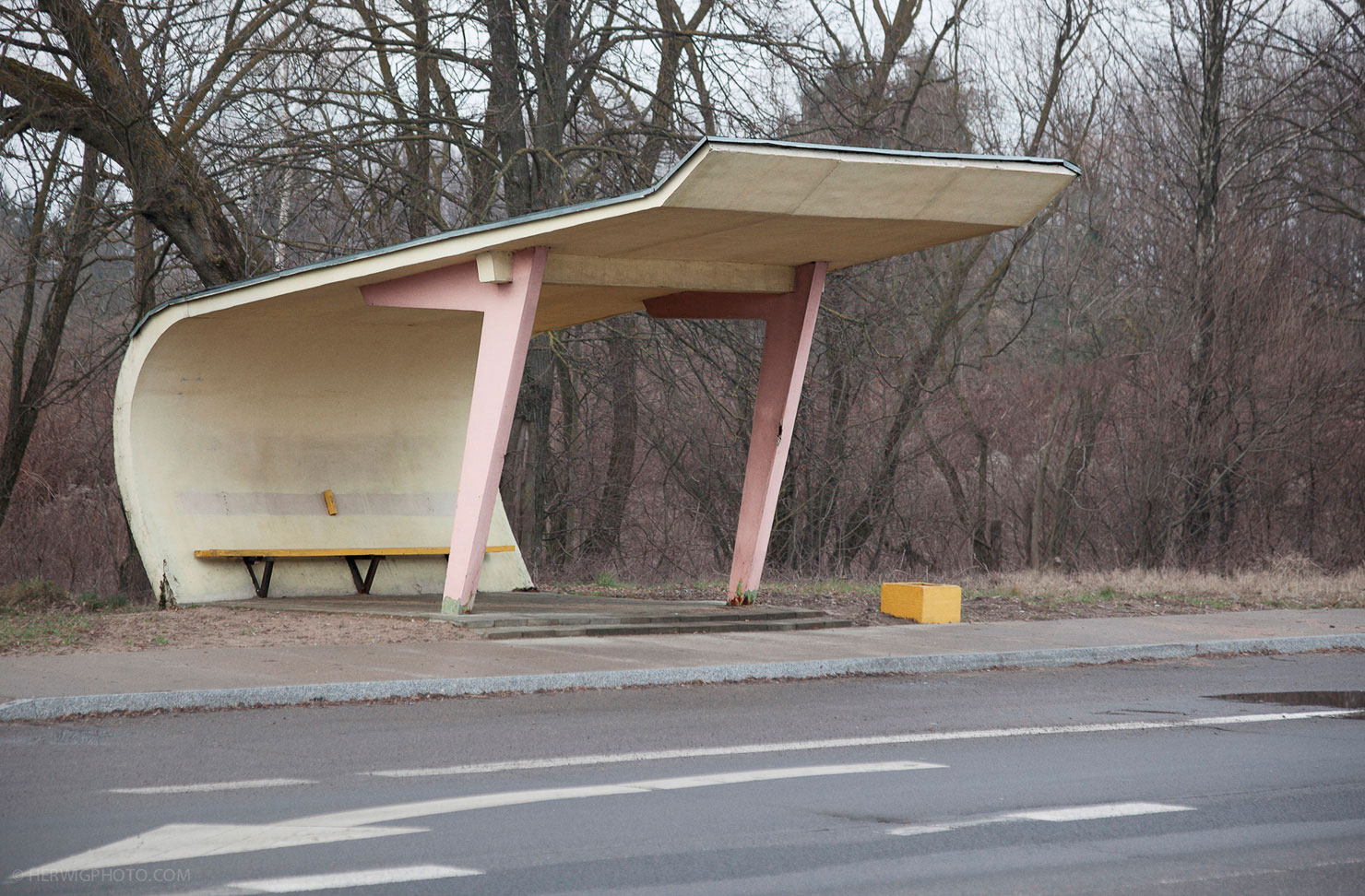
Kaunas, Lithuania.
{“img”:”/wp-content/uploads/2015/09/stop_06.jpg”, “text”: “Shymkent, Kazakhstan.”}
For example, I spent several days in one district. I took taxis in the morning and showed the drivers examples of the bus stops and asked them to remember if they saw something similar.
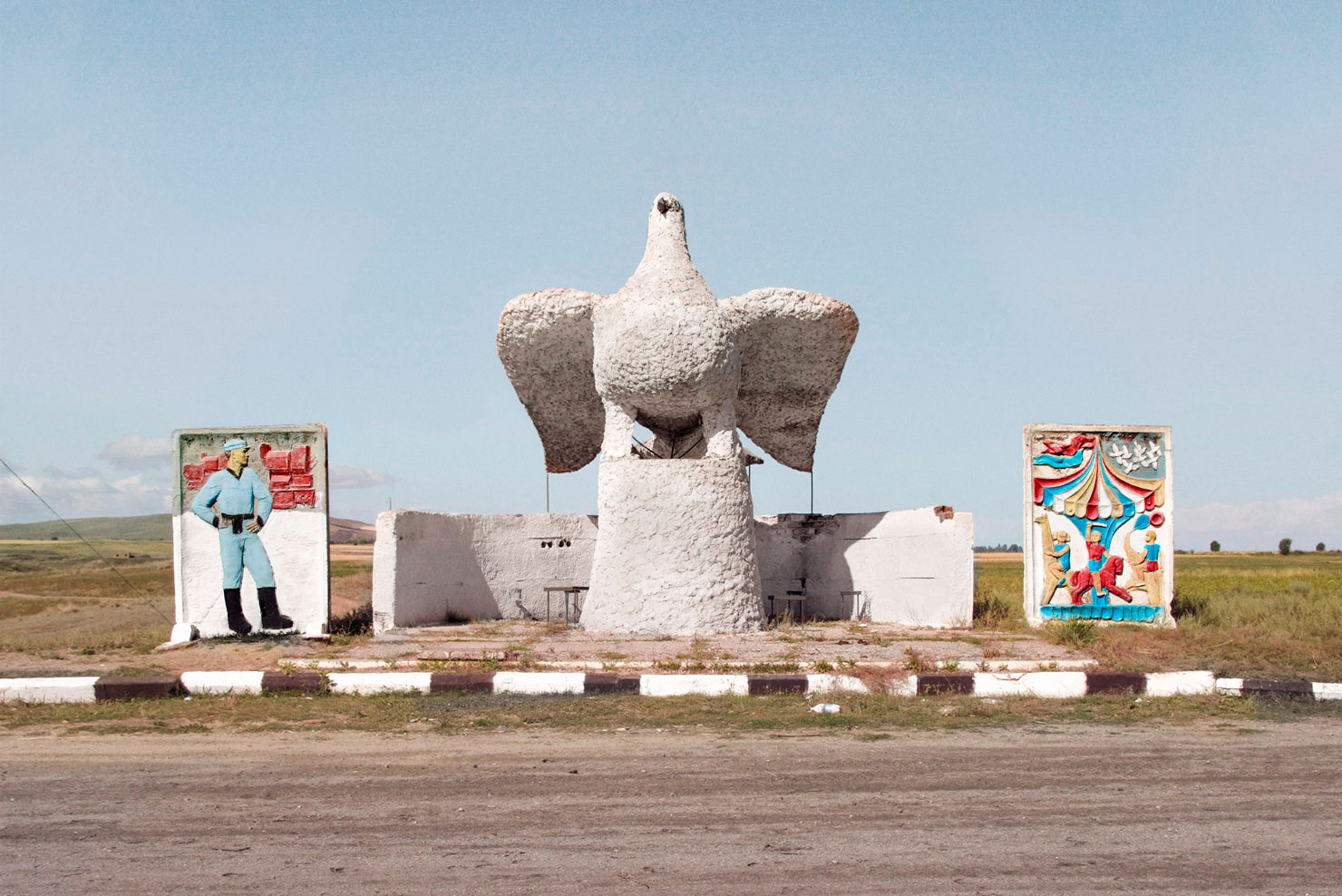
Karakol, Kazakhstan.
{“img”:”/wp-content/uploads/2015/09/stop_08.jpg”, “text”: “Aralsk, Kazakhstan.”}
{“img”:”/wp-content/uploads/2015/09/stop_09.jpg”, “text”: “Saratak, Armenia.”}
More often than not the drivers didn’t notice them because, for them, the stops were just an everyday thing. But at the end of our common quest, they began to appreciate the beauty of these structures. We drove more than 600 kilometers in three days with our driver in Armenia. I seemed crazy to him on the first day, especially when he would breeze past a bus stop and I would hysterically yell, “There it is! There! Stop! Stop!” He would reply, “What? What do you see? There’s nothing there. Oh, you mean that thing?” At the end of the third day, he got a taste for it and didn’t want to stop: “Let’s find another one! Let’s have a look there.” Afterwards, we came up to a new bus stop and he looked it over studiously before handing down the verdict: “Nope, too simple.” Or, “Yeah! That one’s beautiful!”
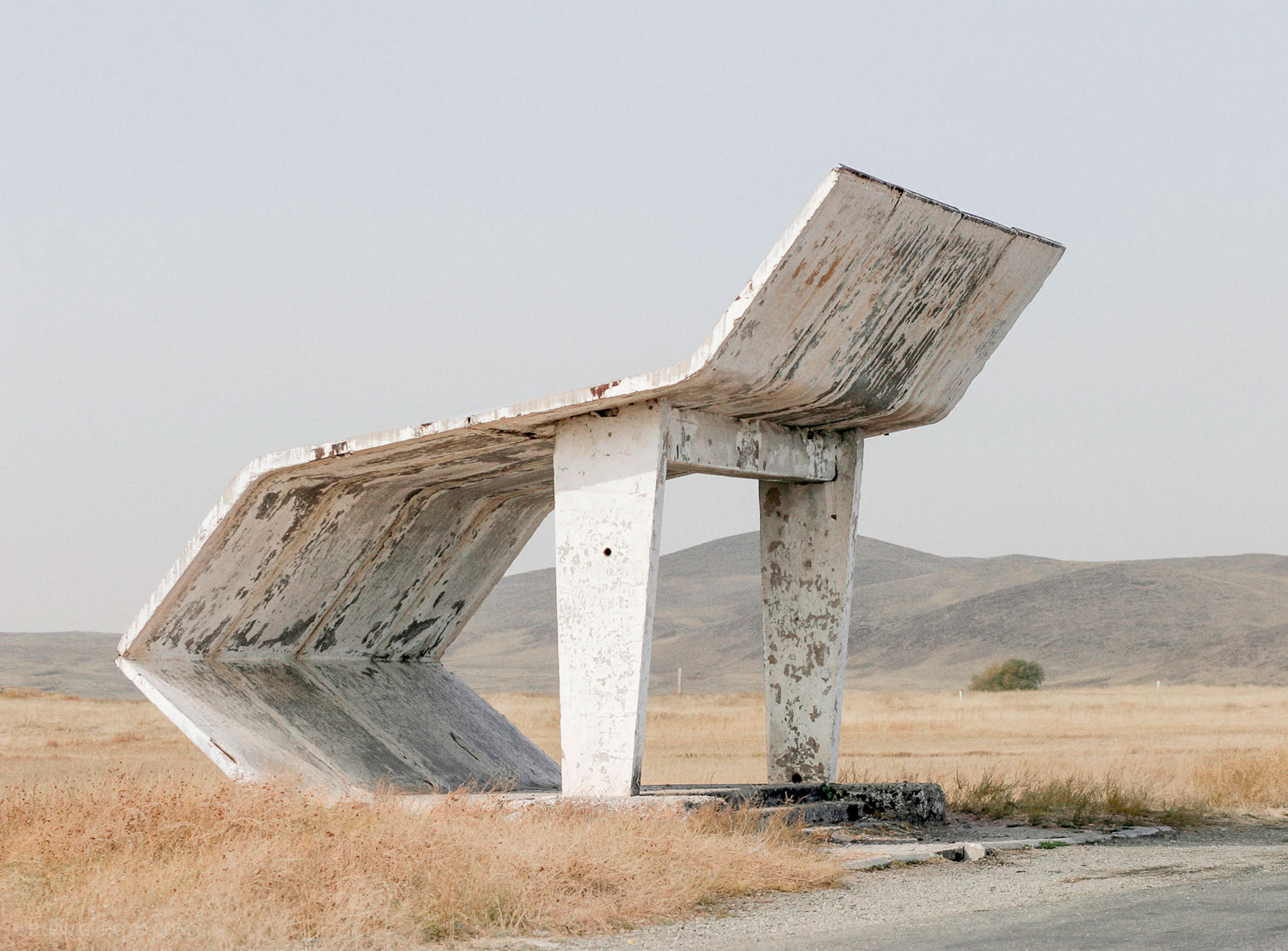
Taraz, Kazakhstan.
{“img”:”/wp-content/uploads/2015/09/stop_11.jpg”, “text”: “Niitsiku, Estonia.”}
{“img”:”/wp-content/uploads/2015/09/stop_12.jpg”, “text”: “Kutsi, Estonia.”}
{“img”:”/wp-content/uploads/2015/09/stop_13.jpg”, “text”: “Pitsunda, unrecognized Republic of Abkhazia.”}
The situation was a little better in the Baltics. Apparently because of the fact that they’re now all a part of the European Union, the Google-mobile had already made it there. There, before all of my area outings, I looked over routes on Google Earth and pictures on Google Street View many times, taking notice of bus stops on the map.
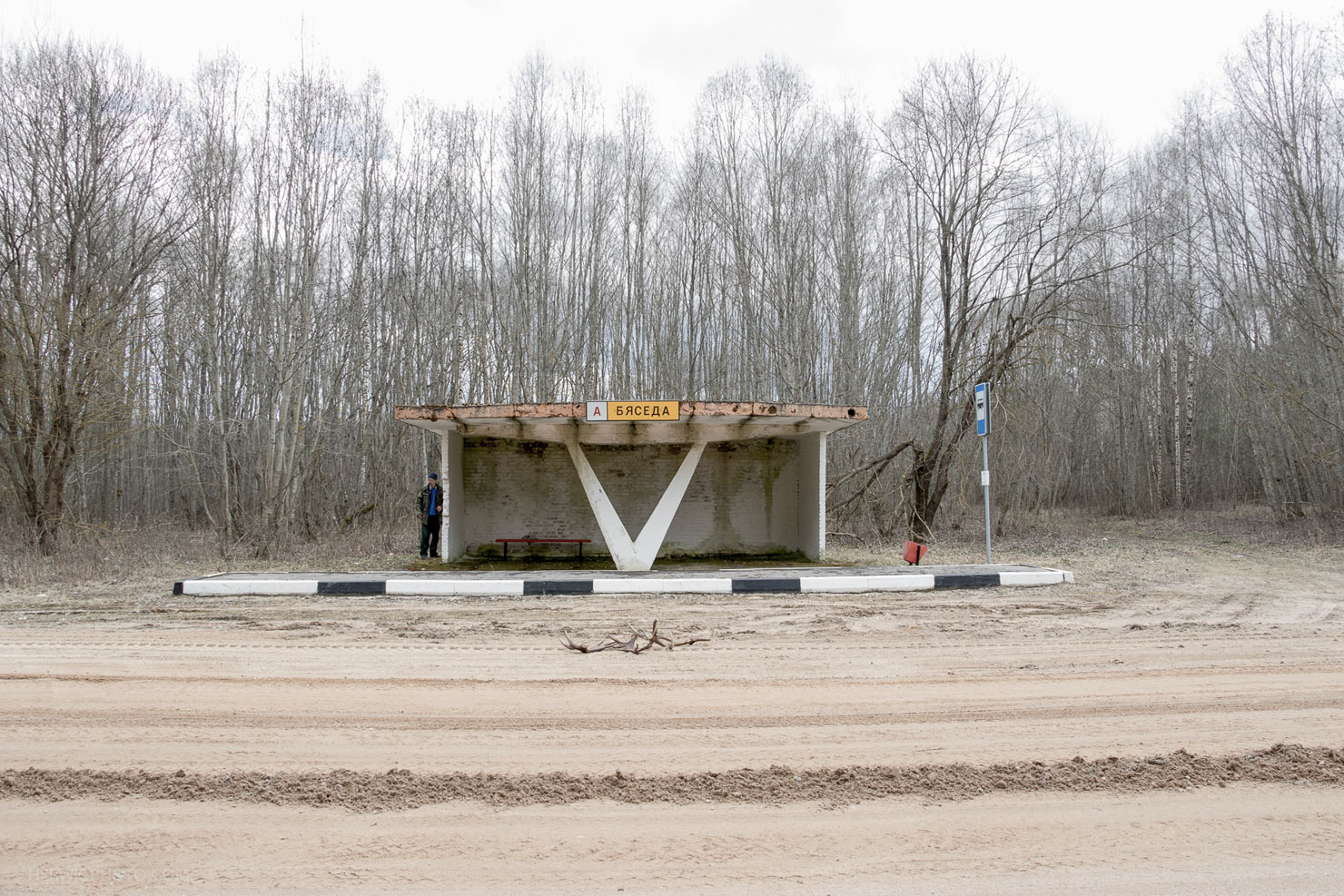
Byaseda, Belarus.
{“img”:”/wp-content/uploads/2015/09/stop_14.jpg”, “text”: “Pitsunda, unrecognized Republic of Abkhazia.”}
{“img”:”/wp-content/uploads/2015/09/stop_15.jpg”, “text”: “Gagra, unrecognized Republic of Abkhazia.”}
The project stayed in my head for many years, and at some moment I understood that I needed to publish it. The publishers I went to all refused me and that’s why I decided to give Kickstarter a try, and this platform turned out to be a very successful marketing move. The campaign paid off within two weeks.
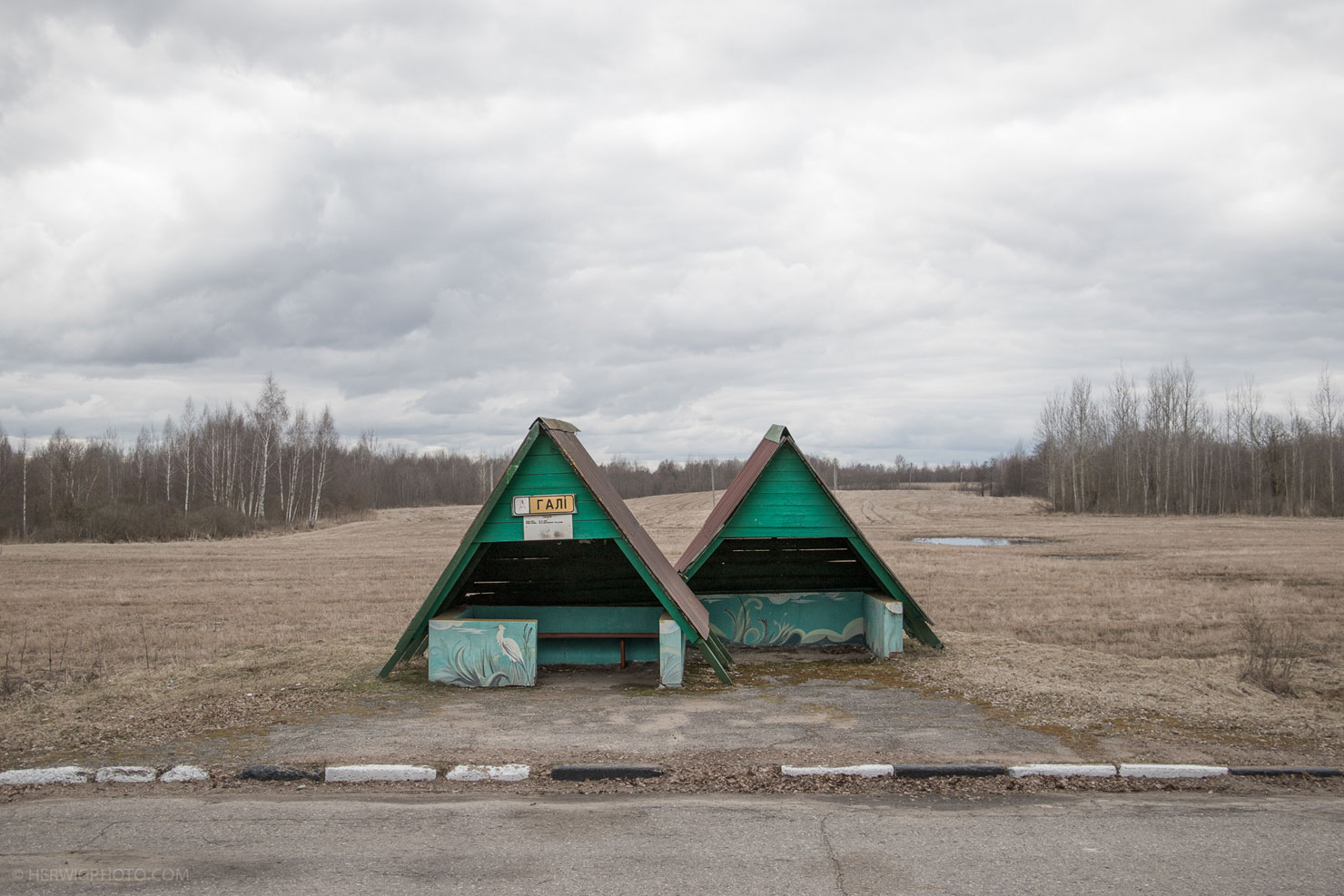
Gali, Belarus.
{“img”:”/wp-content/uploads/2015/09/stop_17.jpg”, “text”: “Chornae, Belarus.”}
{“img”:”/wp-content/uploads/2015/09/stop_18.jpg”, “text”: “Ostroshiytskii village, Belarus.”}
I intentionally left out pictures from Russia in the first book. First, I only found a few that I really liked there. Second, the design of the bus stops doesn’t really make us think about Soviet ideology, but more about local traditions and customs. I think it’s important that the book was more about the former republics of the USSR because, in the West, nobody knows anything about them in comparison with Russia.
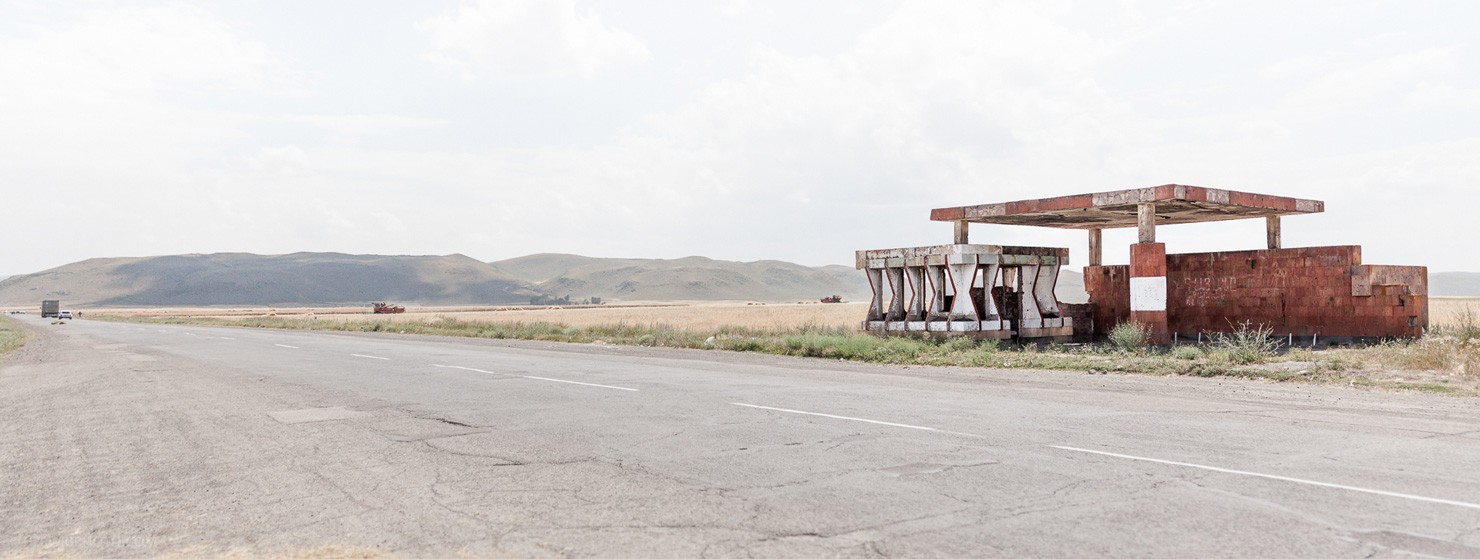
Saratak, Armenia.
{“img”:”/wp-content/uploads/2015/09/stop_20.jpg”, “text”: “Slobodka, Belarus.”}
{“img”:”/wp-content/uploads/2015/09/stop_21.jpg”, “text”: “Saratak, Armenia.”}
In April 2015, I went to Belarus and met one of the architects of Soviet bus stops. The architect spent the whole evening with me, showing me his sketches, maps of locations and photos of his work. We later found several of his bus stops, but many of them had already been demolished and in their places now stand the ordinary box bus stops. It’s unfortunate that they couldn’t withstand the challenge of time. What’s more unfortunate, though, is that they weren’t appreciated enough while they were standing on the roadside.
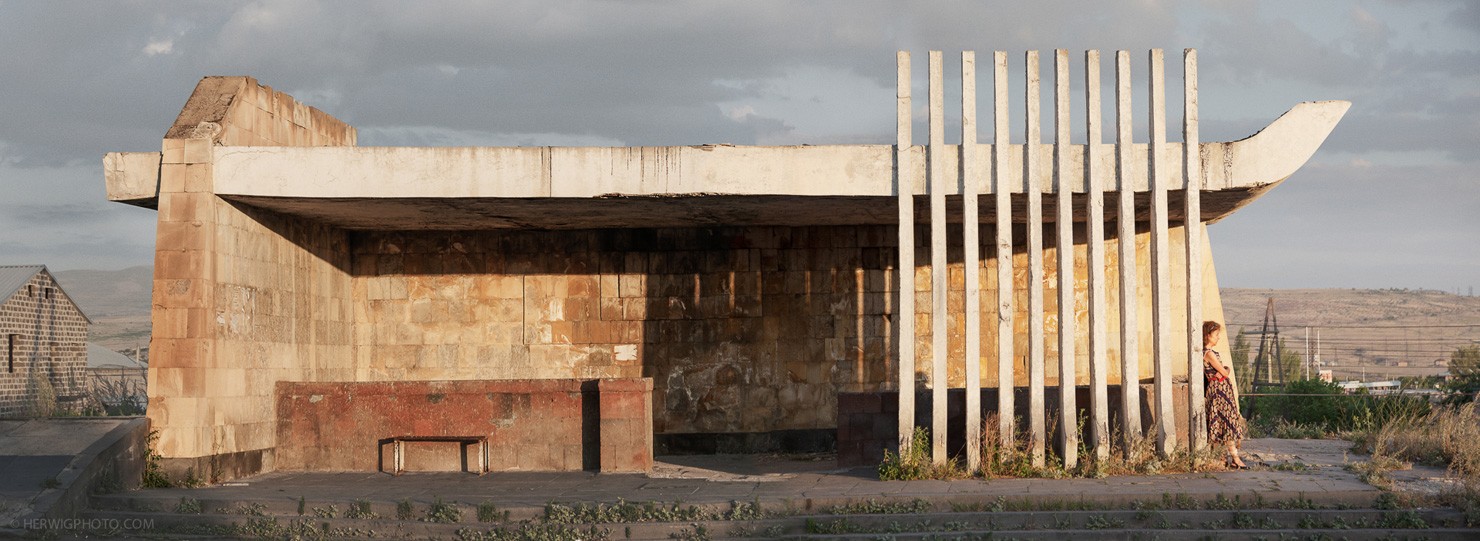
Yerevan, Armenia.
{“img”:”/wp-content/uploads/2015/09/stop_22.jpg”, “text”: “Vagarshapat, Armenia.”}






